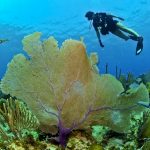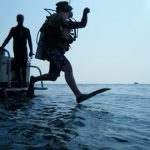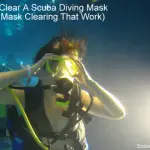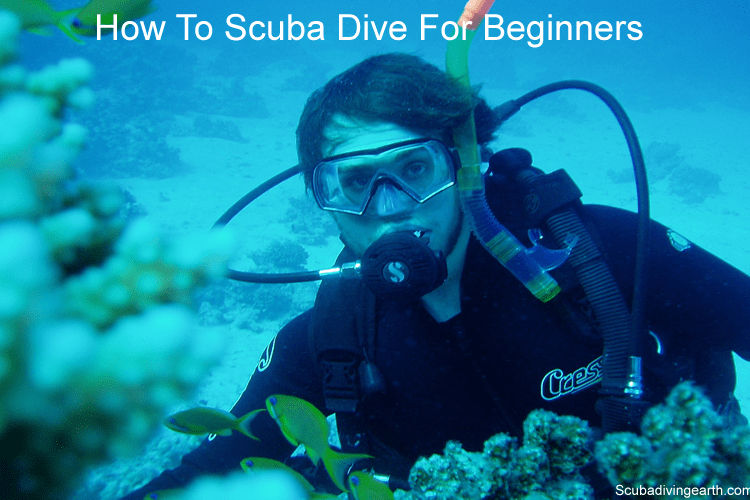
How to scuba dive for beginners with 7 key skills and tips to master as you learn to scuba dive
If you are about to learn how to scuba dive or you’ve just begun your scuba diver training this article is an important one.
7 essential skills to master for scuba diver beginners:
- Never hold your breath.
- Equalise your ears early and often.
- Learn buoyancy control to become neutrally buoyant.
- Learn to clear your mask.
- Learn to clear your regulator.
- Release air from your BCD on your ascent.
- Always perform a safety stop at 5-6 metres (16-20 feet).
The best way to do more diving is to book yourself on a scuba diving liveaboard. You can check the latest and best deals on liveaboards using the following window:
How to scuba dive for beginners
This article is about ‘how to scuba dive for beginners.’ I’ve listed the top 7 skills you need to master as you learn to scuba dive. This begins with the most important rule of scuba diving: Never hold your breath.
Here are the seven key skills to master as a beginner scuba diver:
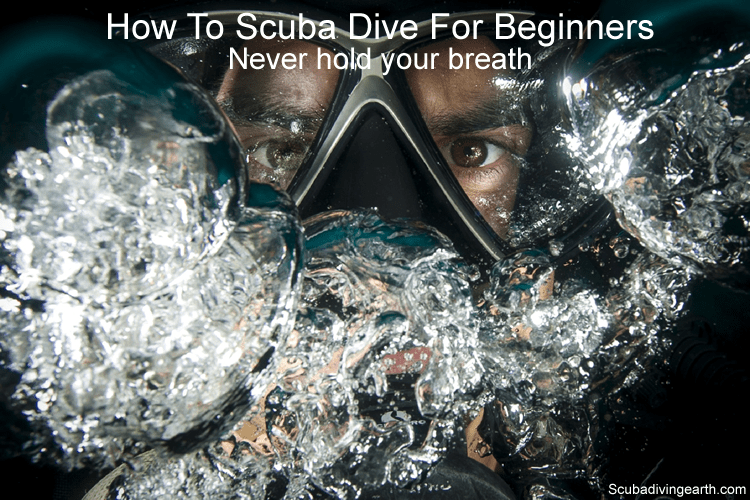
1. Never hold your breath when scuba diving
The first and the most important skill to learn and understand is to never hold your breath when scuba diving.
When you’re on land and breathing in your normal environment holding your breath isn’t a problem. But when you’re underwater that’s another story.
To avoid holding your breath when you first begin diving is to breathe normally. As you progress you’ll learn better breathing techniques, but for now focus on other things.
Pro diver tip: To improve your air consumption when breathing underwater, try breathing in for the count of three and then out for the count of three. When you’ve mastered this, increase your count to four and so on. You may be able to increase your count to five or six on the in-breath and the same on the out-breath.
The most important time when you must never hold your breath is when you are ascending. It is during your ascent when air expands. So be sure to always be releasing the air from your lungs as you ascend and don’t over-expand your lungs on an ascent.
Click this link to learn more about why holding your breath is dangerous. See tip number 4 of the 26 rules for safe scuba diving (But please read all 26 as a beginner scuba diver).
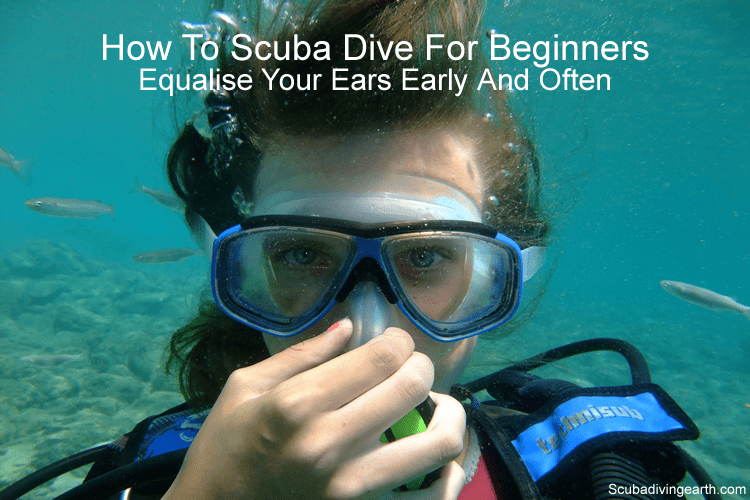
2. Equalise your ears early and often when descending on a dive
You’ve probably experienced the pressure on your ears as you’ve descending into the deep end of a swimming pool. That’s because of the increased pressure of the water.
When you scuba dive you go even deeper than you can as a swimmer. Which means you’ll need to equalise your ears as you descend.
As soon as you leave the surface pinch your nose and blow gently down your nose. This is known as the Valsalva manoeuvre, which forces the Eustachian tubes open.
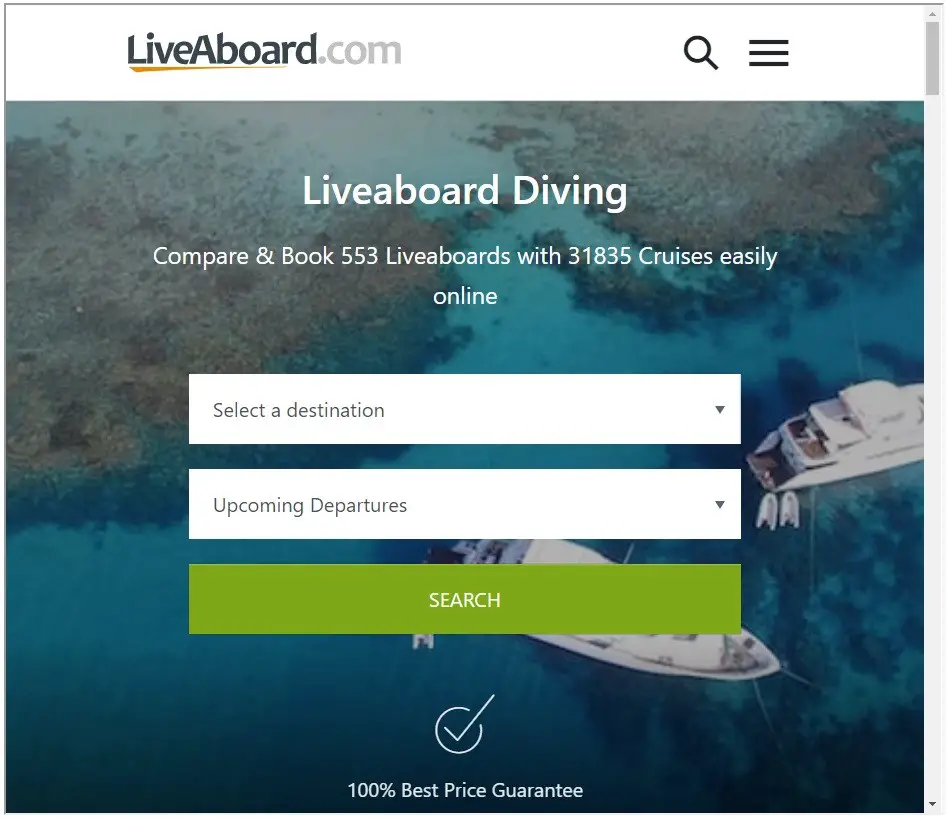
Your Eustachian tubes connect from the back of your throat to the middle ear. When you force them open in this way the air pressure is equalised.
Pro diver tip: During the first 10 metres (33 feet) keep your fingers on your nose. Keep performing the Valsalva manoeuvre to avoid the pressure build up on your ear drums.
You will feel a ‘pop’ in your ears when they are cleared. Keep doing this all the way to the bottom or to the depth of your dive.
Pro diver tip: If you’re struggling to equalise your ears ascend slightly to relieve the pressure. Try to equalise your ears at this shallower depth and then try to ascend once more.
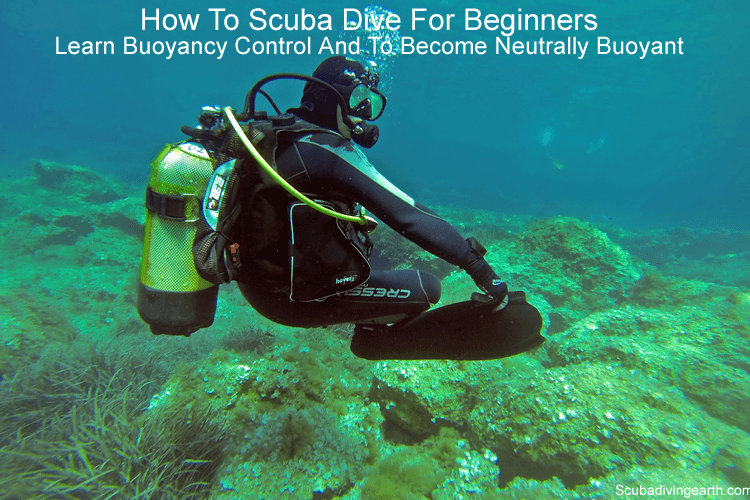
3. Learn buoyancy control to become neutrally buoyant as a beginner scuba diver
The ideal state for scuba divers is neutral buoyancy. Neutral buoyancy is when your ‘effective body mass‘ is equal to the mass of water you displace.
To achieve and to maintain neutral buoyancy you need to use your Buoyancy Control Device (BCD). Or as you progress to other exposure suits like a drysuit you will learn to use this to control your buoyancy.
As you descend you become increasingly negatively buoyant. Which means you will need to compensate for this by adding air to your BCD.
Pro divers tip: Add very small amounts of air each time until you achieve neutral buoyancy. If you add large amounts of air you risk over-inflating your BCD and becoming positively buoyant. This will waste precious air you need for breathing.
The benefits of scuba diving whilst neutrally buoyant include:
- You’ll not be constantly fighting to stay off the bottom. This is particularly important when scuba diving on a coral reef, as it avoids damaging the reef.
- Achieving and maintaining neutral buoyancy will help you to conserve your air.
- If you conserve your air you will increase your dive time and dive for much longer.
Click this link to see how to achieve neutral buoyancy.
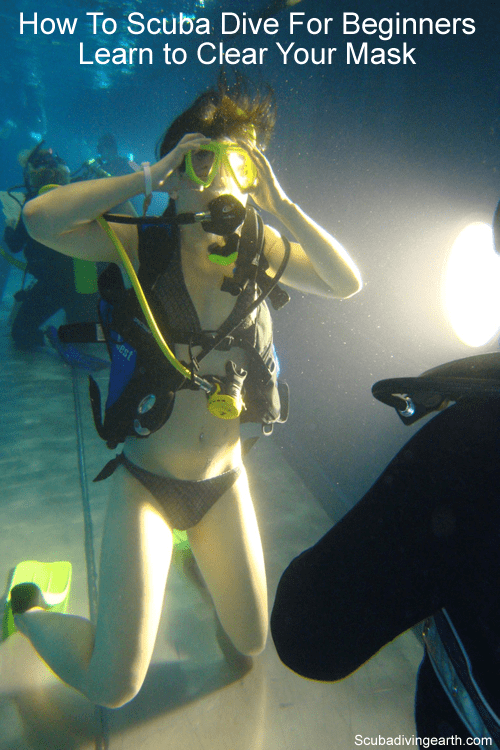
4. Learn to clear your mask as a beginner scuba diver
There are a number of reasons why you may need to clear your mask of water.
Reasons for mask clearing include:
- An ill-fitting mask that leaks underwater.
- You may laugh underwater which can lead to water leaks.
- Your mask may get knocked and fill with water.
- You mask may be knocked off completely by your buddy’s fins.
- The mask may be pulled off in strong currents.
- Your mask may fog up and one way to clear it underwater is to let a small amount of water in and swill it around, then clear it again.
Whatever the reason for needing to clear your mask, this is an important skill to master as a beginner scuba diver.
Pro diver tip: Master this skill using just one hand. Use only one finger to press against the top of the mask. You never know when you might need to use your other hand for something else. For example, holding on to a shot line back to the boat.
Click this link to see how to clear your mask in 4 simple steps.
5. Learn to clear your regulator when you learn to scuba dive
The are a few reasons why you might want to clear your regulator, which include the following:
- Your regulator may get knocked from your mouth by a fellow scuba diver’s fin.
- You may have a dry mouth. To help with dry-mouth scuba diving take your regulator out of your mouth and take in a small amount of water and swill it around in your mouth. This will take away the dryness, but don’t swallow the water, spit it out instead.
To clear your regulator underwater follow these steps:
- First point the mouthpiece downwards.
- Secondly, press the purge button to release some air through your regulator in order to clear out any water.
- Then place the regulator back into your mouth.
- When your regulator has been out of your mouth underwater, even if you’ve purged it, you are better to first breath out before your first in-breath.
That way you make sure you clear any excess water. But more importantly, you won’t inhale water.
Pro diver tip: Don’t ascend or descend as you clear your regulator. But if you have to ascend when you are clearing it, make sure you are not holding your breath. Breath out a constant stream of bubbles to avoid over-expanding your lungs.
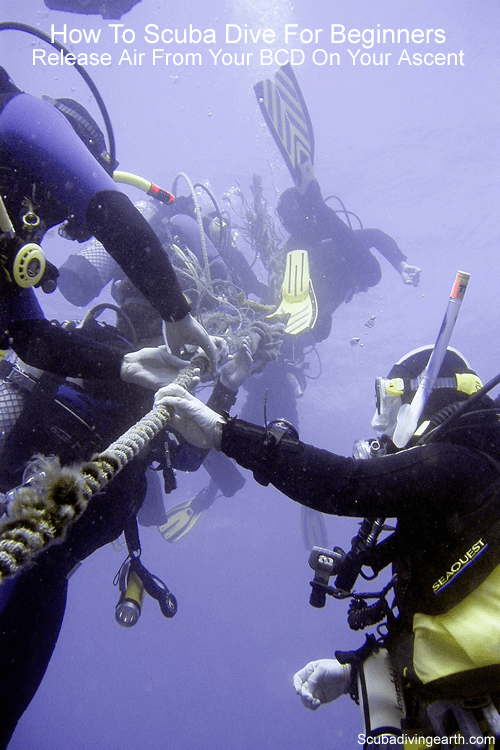
6. Release air from your BCD on your ascent from a dive
When you ascend from your dive you will become positively buoyant. As you ascend you will need to release air from your Buoyancy Control Device (BCD). If you don’t you will end up rushing to the surface out of control.
If that happens you may end up with decompression sickness or the bends.
Pro diver tip: Release small amounts of air on your ascent to avoid becoming negatively buoyant which would cause you to descend again.
7. Always perform a safety stop a 5-6 metres (16-20 feet) on every dive
Scuba dive safety is the number one priority. Always remember that scuba diving is classed as a dangerous sport. So I recommend to treat it that way and respect the water.
With that said there’s no need to be afraid of scuba diving, as it’s perfectly safe if you follow all the safety guidelines. Also, make sure you listen carefully to your scuba diver instructor. Make sure you learn the theory to scuba diving too.
But above all, always perform a safety stop at 5-6 metres (16-20 feet) at the end of every dive. If you’re not sure about the difference between a safety stop and an emergency decompression stop, click this link to read about emergency decompression stops vs safety stops.
Pro diver tip: Buy yourself a dive computer so you know your depth. This will make it easier to maintain your safety stop depth at 5-6 metres.
More Reading: What should you not do after scuba diving (11 must NOT do’s after diving)
I hope you enjoyed this article about how to scuba dive for beginners
I’d love to hear from you. Tell us about your adventures of diving and snorkeling, in the comments below. Please also share your photos. Either from your underwater cameras or videos from your waterproof Gopro’s!
If this article hasn’t answered all of your questions. If you have more questions either about snorkeling or scuba diving (or specifically about how to scuba dive for beginners), please comment below with your questions.
There will also be many more articles about scuba diving (and snorkeling) for you to read and learn about these fabulous sports.
Have fun and be safe!

